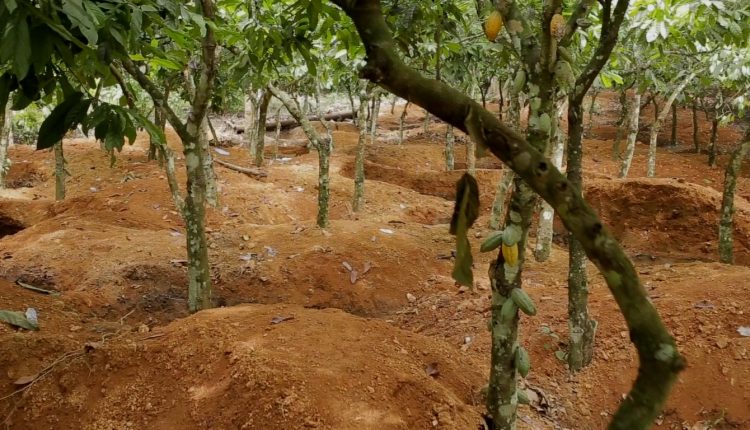Over 100,000 acres of Cocoa farms destroyed by galamsey – Farmers Association
The Mankrom Cocoa Cooperative Farmers Association has expressed deep concern over the escalating destruction of cocoa farms due to illegal mining activities, commonly known as galamsey.
According to the farmers, over 100,000 acres of cocoa farms have been destroyed in the pursuit of gold.
The President of the Association stressed the urgent need for government intervention to halt the menace and protect the livelihoods of cocoa farmers.
“They are destroying cocoa farms and lands for this illegal mining and we have not heard anything. In case the government is not aware of the destruction; the cocoa board is telling farmers that they cannot do anything as of now looking at the level of harm and the big men that are into gold mining.
“Now, even the government has changed the name and made it community mining. What is community mining? They are doing exactly what the illegal miners are doing.
“More than 100,000 acres of farmlands have been destroyed due to illegal mining and it has affected our production for this year. Because most of the cocoa has been cut down and once they have been cut down, it is making things difficult for us to get the harvest that we are getting.
“So, I believe that going forward the government should declare a state of emergency in the galamsey areas. All galamsey issues should be halted so that after the elections, a commission should be set up to investigate all the illegal mining in the country so that we come up with a blueprint, for the way that we should do mining in Ghana.
“Other than that everybody has to just wake up and search for gold and illegally continue on those businesses, then lives and properties will continue to be affected,” he said on Citi News.
Conversations on galamsey and its dire impact arose after the management of Ghana Water Limited (GWL) announced severe water supply challenges in Cape Coast, Elmina, and surrounding communities due to galamsey activities in the Pra River.
In a press statement signed and issued by the Central Regional Office of GWL on Friday, August 30, it explained that water sources have been polluted beyond reasoning limits, affecting processing and distribution for domestic and industrial use.
It further mentioned that the Sekyere Hemang Water Treatment Plantplant is producing only 7,500m³/day, a quarter of its capacity, causing severe inconvenience to customers.



